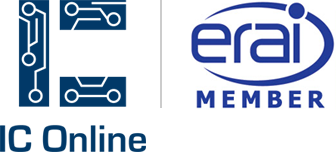Surface-Mount vs. Through-Hole Soldering: Which is Best for Your Project?
In the world of electronics, there are two main soldering techniques: surface-mount and through-hole. Each technique has its own unique advantages and disadvantages, and the best choice for your project depends on a variety of factors. In this article, we'll compare the two techniques and help you decide which is best for your specific needs.
Surface-Mount Soldering
Surface-mount soldering, also known as SMT (surface-mount technology), involves soldering electronic components directly onto the surface of a printed circuit board (PCB). This technique is typically used for smaller components, such as resistors, capacitors, and integrated circuits (ICs). Surface-mount soldering offers several advantages:
-
High-density packaging: Surface-mount components can be placed closer together on the PCB, resulting in a higher component density. This allows for smaller, more compact electronic devices.
-
Automated assembly: Surface-mount components can be easily placed and soldered using automated assembly machines, resulting in faster production times and increased accuracy.
-
Reduced material costs: Surface-mount components are generally smaller and require less material to manufacture, resulting in lower costs.
-
Easier maintenance: Surface-mount components are easier to replace or repair compared to through-hole components, as they are not buried within the PCB.
Through-Hole Soldering
Through-hole soldering involves inserting electronic components with leads into holes drilled in the PCB and soldering them in place. This technique is typically used for larger components, such as transistors and diodes. Through-hole soldering offers several advantages:
-
Better mechanical stability: Through-hole components have leads that extend through the PCB and can provide better mechanical stability when compared to surface-mount components. This is particularly beneficial for larger or heavier components.
-
Easier assembly: Through-hole components are generally easier to assemble using hand-soldering techniques compared to surface-mount components, which require precise placement and soldering.
-
Better heat dissipation: Through-hole components often have more surface area exposed to the environment, allowing for better heat dissipation compared to surface-mount components. This can be beneficial for high-power applications.
-
Lower material costs: Through-hole components generally require less material to manufacture compared to surface-mount components, resulting in lower costs.
Choosing the Best Technique for Your Project
When choosing the best soldering technique for your project, consider the following factors:
-
Component size and type: Surface-mount technology is typically used for smaller components, while through-hole soldering is preferred for larger and heavier components.
-
Production volume: If you require high-volume production, surface-mount soldering may be more suitable due to its automation capabilities. However, for lower production volumes, through-hole soldering may be a more cost-effective option.
-
Component density: If you need to pack a high density of components onto a PCB, surface-mount soldering is generally preferred due to its ability to achieve higher component density.
-
Cost considerations: Surface-mount components generally require more material to manufacture and can be more expensive compared to through-hole components. However, surface-mount soldering can result in overall cost savings due to its high-volume production capabilities and material efficiency. Through-hole components generally have lower material costs but may require more assembly time using hand-soldering techniques.
-
Availability of equipment and skills: Surface-mount soldering requires specialized equipment and skills, while through-hole soldering can be performed using more common hand-soldering techniques. Consider the availability of equipment and skills in your organization when choosing the best technique for your project.





